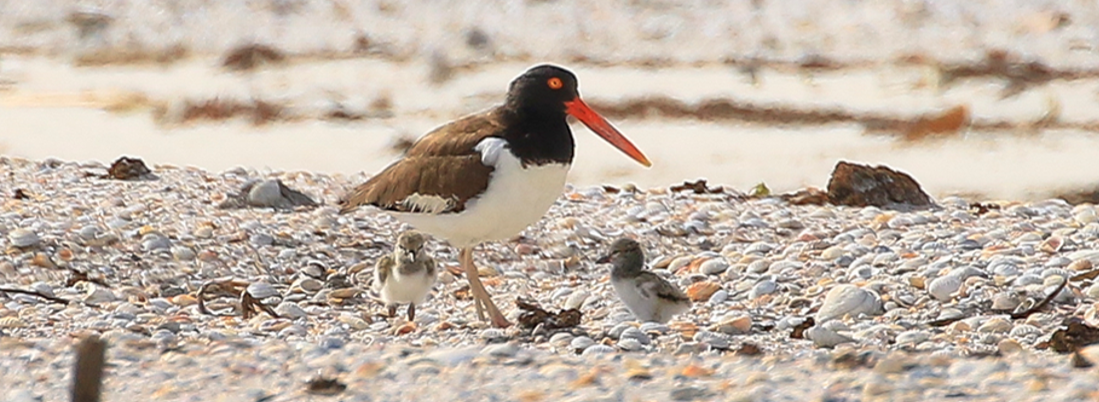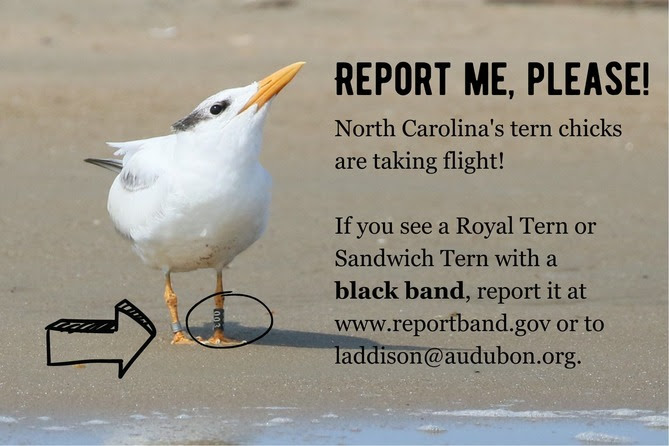FSA Partnership Meetings:September 22: Lee/Charlotte/Collier Partnership. Contact Col Lauzau or Megan Hatten. October 2: Treasure Coast Shorebird Partnership. Contact Niki Desjardin. October 3: Volusia County Shorebird Partnership. Contact Jennifer Winters or Jaymie Reneker. October 5: Suncoast Shorebird Partnership. Contact Holley Short or Beth Forys. October 12: St. Johns/Flagler Shorebird Partnership. Contact Hailey Dedmon or Chris Farrell. October 13: Space Coast Shorebird Partnership. Contact Anna Deyle or Hailey Dedmon. October 19: Panhandle Working Group. Contact Caroline Stahala. October 24: Nature Coast Partnership. Contact Blair Hayman or Jennifer Eells. October 31: Southeast Florida Shorebird Partnership. Contact Andrea Pereyra or Ricardo Zambrano. Events:October 5: Join the St. Lucie Audubon Society for a presentation of "Butterflies & Birds in Your Yard" from 7-9 PM at the Oxbow Eco-Center. Certified FL Master Naturalist & Gardener Diane Goldberg's presentation is about gardening with native plants and how they help to keep our water and waterways clean. They also help to mitigate climate changes and at the same time you can enjoy butterflies and birds in your own yard. October 9-13: Waterbird Society Annual Meeting October 12-15: Florida Birding & Nature Festival October 14: October Big Day October 26-28: Audubon Florida Assembly November 2: Join the St. Lucie Audubon Society for a presentation of the "History of Water Management in South Florida" from 7-9 PM at the Oxbow Eco-Center presented by Kathy LaMartina of the South Florida Water Management District. November 10-12: Florida Ornithological Society Fall Meeting Reminder:October 1: Florida Shorebird Database Data Entry Deadline  Building an American Oystercatcher Paradise in Lake Worth LagoonTucked along the intercoastal waterway in central Palm Beach County is a little paradise for American oystercatchers and other beach-nesting birds. The Lake Worth Lagoon is the southernmost nesting location for oystercatchers on Florida’s Atlantic Coast – and it has consistently been among the state's most productive oystercatcher nesting sites. But, in fact, the area has only recently become home to nesting birds! Palm Beach County Environmental Resource Management (PBC ERM) constructed a series of spoil islands to create more oyster and mangrove habitats to improve water quality and benefit marine species. Nesting oystercatchers took note of the excellent foraging and breeding habitats and moved in immediately after the first island - Snook Island - was completed in 2005. The FSA partnership sprang into action. The FWC and PBC ERM collaborated to obtain additional resources for habitat creation. They worked together to design, create and maintain suitable bird-nesting habitats in the lagoon over the years that followed. Ongoing efforts, including regular trash clean-ups, are planned as they set their sights on how to continue to improve habitat for all species that rely on the estuary for survival, including manatees, oysters, fish and birds. They have proven that if you build it, oystercatchers will come. Even better, managing relatively open habitats for beach-nesting birds has also attracted nesting least terns and black skimmers to the area! A growing number of FSA partners collaborate each year to protect and post sensitive nesting areas as well as monitor nesting outcomes to inform management, research and conservation actions to benefit the birds. Close coordination and communication with law enforcement has facilitated effective, regular patrols during the nesting season and busy holidays. The remarkable restoration, management and conservation actions resulted in up to four pairs of American oystercatchers nesting on the Lake Worth Lagoon islands annually. Since 2005, the islands have hosted 42 oystercatcher nests that have hatched 65 chicks and fledged 51 with an average annual productivity of 1.22 fledged chicks per pair. This productivity value is well above the typical statewide productivity of 0.40 fledglings per pair and it even surpasses the annual range-wide oystercatcher productivity goal of 0.5 fledglings per pair! One power-nesting oystercatcher pair in the area produced 6 fledglings in just two nesting seasons! Why are they so successful? In addition to the incredible habitat in Lake Worth Lagoon where foraging opportunities are adjacent to high-quality nesting sites, it is the extraordinary conservation and management of the nesting islands and birds that has resulted in growing the population of oystercatchers! The conservation benefit of the Lake Worth Lagoon extends beyond oystercatchers, manatees and oysters. It even extends beyond nesting season – the area is the wintering home to over 70 species of shorebirds, seabirds, marsh birds and wading birds! Learn more about how the local community is getting involved with the restoration of the Lake Worth Lagoon: Palm Beach County video Photo credit: Palm Beach County Environmental Resource Management |
 Welcome, Kristin Taylor!Please welcome our new Critical Wildlife Area Coordinator, Kristin Taylor! Kristin started working with the Florida Fish & Wildlife Conservation Commission (FWC) as a Critical Wildlife Area Biologist monitoring breeding populations of shorebirds, seabirds and wading birds. Following that, she worked as a statewide technician with the FWC's Fish & Wildlife Research Institute banding and collecting resight data on American oystercatchers. Prior to joining the FWC, Kristin worked with wildlife in zoological, fieldwork and veterinary settings. We are excited to have her in her new role as the Critical Wildlife Area Coordinator! |
Last Call for Data Entry!Sunday, October 1st is the final day to enter your 2023 breeding season data into the Florida Shorebird Database (FSD). All surveys contribute valuable information and help with answering long-term questions, even if the surveys didn't occur during a count window! Make sure you have entered and reviewed all of your: - Route surveys (even if no nesting birds were observed)
- Shorebird nests (plovers, oystercatchers, killdeer, stilts, willets)
- Seabird colonies (terns, skimmers, gulls, pelicans)
- Roving chick sightings for shorebird chicks out of their nests
- Remember to enter flight-capable chick observations and include natal nest information whenever possible!
- Roving chick sightings for seabird young away from their colonies
- Rooftop surveys (even those without birds this season)
And be sure to double-check that all of your shorebird nests, seabird colonies and rooftops have a final nesting outcome! In the coming months, the data quality control team will be reviewing records and reaching out for clarifications as needed. This is a normal part of the annual data review process and our conversations with you help us understand site-specific context and ensure that the dataset is internally consistent. Thank you in advance to all partners involved in this process! We appreciate your help! If you have any questions, need assistance, or want to request a data entry extension, please email us at FLShorebirdDatabase@MyFWC.com. We are happy to help! As always, if you experience any malfunctions with the FSD website, we encourage you to report them. Your feedback helps us create a better website! Thank you for being an essential partner in the shorebird monitoring program!  North Carolina is Banding Terns! Conservation partners in North Carolina have begun banding Royal Tern and Sandwich Tern chicks in North Carolina! The bands are black and field-readable. Banded terns from North Carolina have already been sighted in Maryland and New Jersey. If you see a banded tern, you can report your sightings to the Banded Bird Lab or email laddison@audubon.org. |
| 

No comments:
Post a Comment